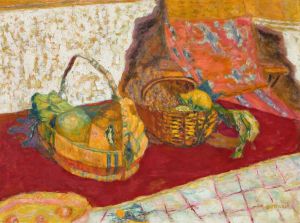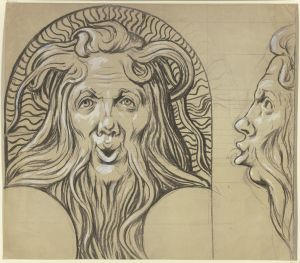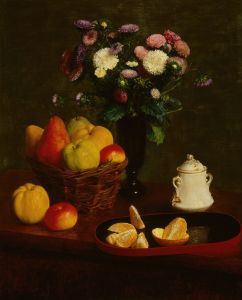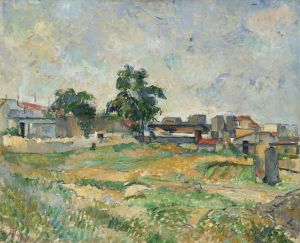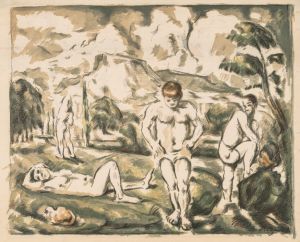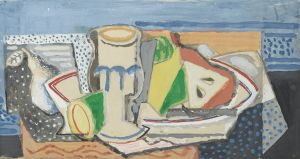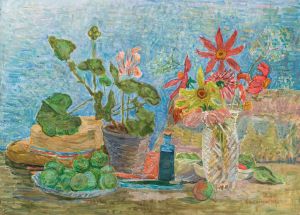
Still Life with a Ginger Jar and Eggplants
A hand-painted replica of Paul Cézanne’s masterpiece Still Life with a Ginger Jar and Eggplants, meticulously crafted by professional artists to capture the true essence of the original. Each piece is created with museum-quality canvas and rare mineral pigments, carefully painted by experienced artists with delicate brushstrokes and rich, layered colors to perfectly recreate the texture of the original artwork. Unlike machine-printed reproductions, this hand-painted version brings the painting to life, infused with the artist’s emotions and skill in every stroke. Whether for personal collection or home decoration, it instantly elevates the artistic atmosphere of any space.
"Still Life with a Ginger Jar and Eggplants" is a notable painting by the French Post-Impressionist artist Paul Cézanne. Created around 1893-1894, this work exemplifies Cézanne's innovative approach to composition, color, and form, which significantly influenced the development of modern art.
Paul Cézanne, born on January 19, 1839, in Aix-en-Provence, France, is often credited with bridging the gap between 19th-century Impressionism and the early 20th century's new line of artistic inquiry, Cubism. His unique method of building form with color and his analytical approach to nature profoundly impacted the art world.
"Still Life with a Ginger Jar and Eggplants" is a testament to Cézanne's mastery in still life painting, a genre he frequently explored throughout his career. In this painting, Cézanne arranges a collection of everyday objects, including a ginger jar, eggplants, and other fruits, on a table. The composition is carefully constructed, with each element meticulously placed to create a sense of balance and harmony.
Cézanne's use of color in this painting is particularly noteworthy. He employs a palette of rich, earthy tones, with the deep purples of the eggplants contrasting against the lighter hues of the ginger jar and the tablecloth. This contrast not only highlights the individual objects but also enhances the overall depth and dimensionality of the scene. Cézanne's brushwork is deliberate and methodical, with each stroke contributing to the solidity and volume of the forms.
One of the defining characteristics of Cézanne's still lifes is his exploration of perspective. In "Still Life with a Ginger Jar and Eggplants," Cézanne challenges traditional linear perspective by depicting the objects from multiple viewpoints. This technique creates a dynamic tension within the composition, inviting viewers to engage with the painting from various angles. This approach to perspective was revolutionary at the time and laid the groundwork for the Cubist movement, which would emerge in the early 20th century.
Cézanne's still lifes are also notable for their sense of timelessness. By focusing on everyday objects, he elevates the mundane to the level of fine art, encouraging viewers to appreciate the beauty in the ordinary. "Still Life with a Ginger Jar and Eggplants" exemplifies this quality, as the careful arrangement and rendering of the objects invite contemplation and reflection.
Throughout his career, Cézanne remained dedicated to his artistic vision, often working in isolation in his native Provence. Despite initial resistance from the art establishment, his work gradually gained recognition, and by the time of his death on October 22, 1906, Cézanne was celebrated as a pioneer of modern art.
Today, "Still Life with a Ginger Jar and Eggplants" is held in high regard and is part of the collection at the Pushkin Museum in Moscow, Russia. The painting continues to be studied and admired for its innovative approach and its significant contribution to the evolution of modern art. Cézanne's legacy endures, as his work continues to inspire artists and captivate audiences worldwide.





